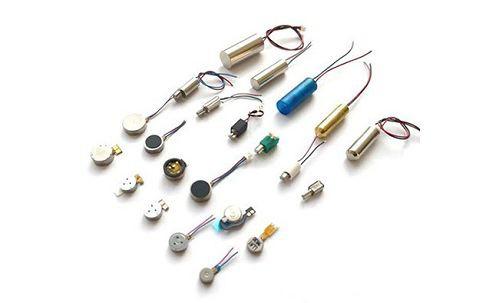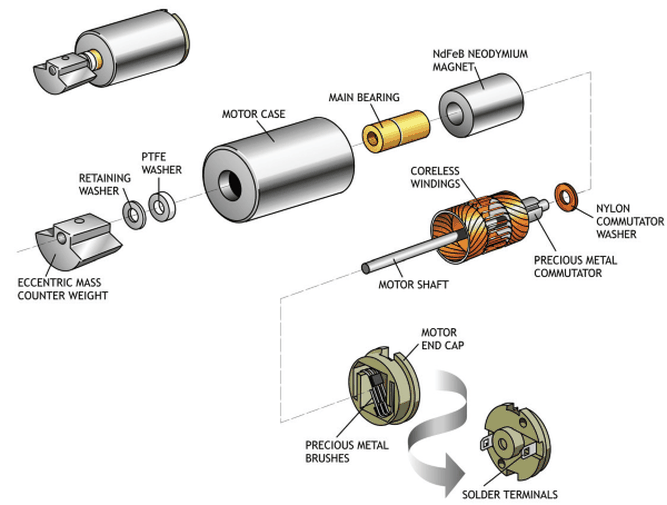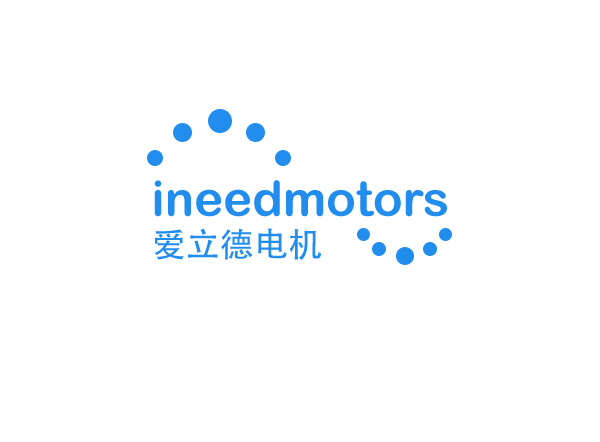Designing for Strong Vibration: Engineering Solutions for High-Intensity Haptic Feedback Applications

Designing for strong vibration helps make devices easy to use. Strong vibrations are important for how you feel touch feedback. Studies show your brain reacts more to stronger vibrations. This means careful design is very important. Good haptic systems need smart designs that balance strength and durability. INEED’s special motors help build reliable feedback systems. Their custom designs improve feedback, making devices fun and quick to respond.
Key Takeaways
Strong vibrations improve touch feedback, making devices feel more real.
Engineers adjust vibration speed and strength for better haptic experiences.
Picking good materials is key for lasting and strong vibrations.
Isolation methods keep delicate parts safe from harmful vibrations.
Testing haptic systems helps find problems and make them work better.
Understanding Strong Vibration in Haptic Technology
The Role of Vibration Dynamics in Haptic Feedback
Strong vibrations are key to how you feel touch feedback. Devices like phones and game controllers use vibrations to mimic real textures. These vibrations are designed to feel natural and lifelike. For example, virtual reality systems use vibrations to make objects feel real. This makes the experience more immersive and exciting.
Haptic technology depends on precise vibrations for good feedback. Actuators move to create vibrations, and the device's design affects how you feel them. Engineers use tools like laser vibrometers to measure vibrations accurately. This avoids problems like distorted feedback. Flexible actuators, like fabric ones, give better feedback in many directions. This makes using devices easier and more engaging.
Frequency and Amplitude in High-Intensity Applications
Frequency and amplitude control how strong vibrations feel. Frequency is how fast vibrations happen, and amplitude is their strength. Together, they shape the quality of feedback. Higher frequencies feel smoother, while lower ones feel stronger. Engineers adjust these settings for realistic feedback in games and virtual reality.
Your skin feels vibrations best around 200 Hz, which is ideal for haptics. Small changes in frequency or amplitude can change how you feel vibrations. Engineers use this knowledge to balance settings for realistic feedback. This ensures the vibrations feel natural and fun to use.
Parameter | JND Range | Best Frequency |
|---|---|---|
Vibration Frequency | 15% - 30% | ~200 Hz |
Vibration Amplitude | 10% - 30% | N/A |
Vibration Duration | Affects intensity | N/A |
Managing Resonance for Optimal Performance
Resonance makes vibrations stronger but can cause problems if unmanaged. At resonant frequency, vibrations feel stronger and improve feedback. Too much resonance can cause noise or damage devices. Engineers design systems to control resonance for better performance.
Isolation mechanisms help manage resonance by protecting sensitive parts. For example, digital pianos use resonance to copy real piano vibrations. This improves sound without harming the device. Synthesizers also use controlled resonance for better playing experiences.
Case Study Description | Measured Aspect | Outcome |
|---|---|---|
Virtual string vibrations | Good feedback, no sound change | |
Acoustic piano | Vibrotactile feedback | Better sound quality |
Digital piano | Real piano vibrations | Improved sound perception |
Synthesizer surface | Different vibration types | Better playing experience |
By managing resonance, engineers create strong vibrations without harming devices. This balance makes haptic systems reliable and fun to use.
Material Selection for High-Intensity Haptic Feedback
Properties of Materials for Strong Vibration Resistance
Picking the right materials is key for strong haptic systems. Materials need to handle strong vibrations without breaking or wearing out. This helps actuators give steady feedback for a long time. Engineers look for materials that are tough, resist wear, and handle repeated use.
Studies show how material properties improve vibration resistance. For example:
Study | Findings |
|---|---|
Application of vibration in FSW | |
Characterization of AZ31/TiC composites | |
Aging effects on basalt fiber composites | Proved durable materials keep performance steady over time. |
These studies show why strong materials are important for haptics. They help devices like VR controllers and wearables give steady feedback, even under heavy use.
Damping Materials and Their Role in Haptic Systems
Damping materials are important for controlling vibrations in haptic devices. They soak up extra energy, cutting noise and protecting parts from damage. This makes feedback clearer and more enjoyable for users.
Research shows how damping materials improve systems:
Study Focus | Findings |
|---|---|
Reduction of System Noise | Damping materials lower annoying noises from mechanical impacts. |
Increasing Signal Vibration Duration | Longer vibrations achieved with slower damping. |
Mechanical Impulse Compensation | Absorbers block outside impacts but may add weight. |
Leaving Out Disturbing Frequencies | Shaping frequencies removes leftover vibrations, improving feedback. |
Active Damping by Frequency Increase | Stronger damping improves signals but uses more energy. |
Using damping materials makes haptic systems feel more real and precise. These materials help create better experiences in gaming and virtual reality.
Balancing Durability and Flexibility in Material Choices
Finding the right mix of durability and flexibility is important. Durable materials handle strong vibrations, while flexible ones fit different shapes. This balance keeps haptic devices strong and useful in many situations.
Tests help engineers find this balance:
Dynamic Testing: Checks how materials handle changing forces, like in real life.
Vibration Testing: Measures how materials perform under vibrations, useful for cars and planes.
Fatigue Testing: Tests how materials survive repeated use for long-term reliability.
These tests help pick materials that are both strong and adaptable. For example, flexible plastics improve feedback in wearables. Tough composites last longer in industrial devices. Choosing the right materials ensures reliable and exciting haptic systems.
Structural Design for Strong Vibration Systems
Making Haptic Devices Stronger
Haptic devices need to be strong to work well. Strong vibrations can wear out or break parts over time. To stop this, engineers strengthen the parts that carry weight. This helps the device stay steady and last longer.
Special tools like FEA help engineers find weak spots in designs. FEA shows where stress and vibrations might cause problems. Engineers fix these areas by adding stronger materials or ribbed shapes. For example, lightweight composite materials make devices stronger without adding weight. These fixes help haptic devices work better, even in tough uses like virtual reality.
Better Shapes for Managing Vibrations
The shape of a device affects how vibrations move through it. Bad shapes can make vibrations worse, lowering feedback quality. Good shapes control vibrations and improve how the device feels to use.
Engineers use curved or smooth edges to lower stress on parts. This stops cracks or breaks from repeated vibrations. Symmetrical designs spread vibrations evenly, making feedback feel the same everywhere. For example, VR controllers with good shapes make vibrations feel real and fun. These designs make haptic devices more exciting and dependable.
Protecting Parts with Isolation
Isolation keeps important parts safe from strong vibrations. Without it, vibrations can harm parts or mess up how the device works. Isolation helps devices last longer and work better.
Rubber mounts, springs, or damping materials are common isolation tools. They block extra vibrations from reaching sensitive parts. For example, in phones, isolation keeps vibrations focused on touch feedback. This improves how the device feels and protects its parts. Adding isolation makes haptic devices stronger and more useful in many ways.
Testing and Validation of Haptic Feedback Systems
Simulating Strong Vibrations in Haptic Applications
Testing strong vibrations is key to making haptic systems reliable. Engineers study how vibrations act in different situations to improve feedback. Tools like vibrometry and modal analysis help measure and see these vibrations. Vibrometry collects detailed data to study how haptic parts move. Modal analysis finds natural vibration patterns, helping improve designs for better results.
Another important step is checking FE models with real-world data. This ensures the system works as planned. Laser vibration tools are great for touchscreens, where accurate feedback matters most. These tests make haptic devices work better and feel more real, giving users a lifelike experience.
Stress Testing for High-Intensity Vibration Durability
Stress testing checks if haptic devices can handle strong vibrations over time. Without it, devices might break after long use, ruining the experience. Task-based tests are helpful here. They check if the device works well for its purpose and meets user needs.
Standard tests, like system and user evaluations, show how durable a device is. System tests check how strong the parts are. User tests focus on how vibrations affect people. These tests find weak spots so engineers can fix them before selling the product.
Purpose | Usage Type | |
|---|---|---|
System-centered | Checks system strength, mostly for testing | Verification |
Task-centered | Tests tasks, checks system and user needs | Validation |
User-centered | Measures user effects, mainly for feedback | Validation |
Tools and Technologies for Vibration Analysis
Special tools help study how vibrations affect haptic systems. Vibrotactile feedback uses vibrations to mimic simple touches like button presses. Force feedback adds more detail, like textures or weight, but needs careful setup to work well.
Frequency analysis shows how vibrations act at different speeds, helping fine-tune devices. Modal analysis finds vibration patterns to improve performance. ODS analysis shows how parts bend under vibrations, helping design stronger devices.
Using these tools makes haptic systems better and more fun to use. They improve touch experiences and keep devices working well in many situations.
Real-World Uses of INEED Vibration Motors in Haptic Tech
Making Gaming and Entertainment More Fun
Games and entertainment are more exciting now than before. Haptic motors help make this possible. They give touch feedback to feel more real. For example, in racing games, the controller vibrates like a car engine or crash. This makes playing more fun and keeps you interested. INEED’s motors, like LRAs and ERMs, give accurate and lifelike vibrations. They make every game feel more thrilling.
The need for haptic systems in gaming is growing fast. By 2025, the market for vibration motors in gadgets may reach USD 10,253 million. It’s growing at 15.5% each year. This shows how important haptics are for making games immersive. From VR headsets to controllers, INEED’s motors improve how games feel and respond.
Helping in Medical Training and Devices
Haptic feedback is changing medical training and patient care. In surgery simulators, it feels like cutting or pressing on tissue. This helps doctors practice important skills. Studies show these systems work well. For example:
Study Title | Findings | Source |
|---|---|---|
Virtual-reality simulator with haptic feedback for knee surgery | Helped improve surgical skills. | |
VR simulator for prostate surgery training | Made surgeries safer and skills better. |

These studies prove haptics improve learning and performance. INEED’s motors give steady and accurate feedback for medical tools. This makes training better and improves patient care by making devices easier to use.
Improving Robots and Industrial Tools
Haptic motors make robots and tools safer and more precise. Robots with touch feedback can handle delicate tasks, like assembling tiny parts. Operators can feel what the robot is doing, making it easier to control. INEED’s motors are strong and efficient, perfect for tough jobs.
New tech like augmented reality (AR) also uses haptics. AR devices with touch feedback feel more real. They help in virtual workspaces or training. INEED’s motors make sure these systems give steady and lifelike feedback. This makes them easier and more fun to use.
Building strong vibration systems needs smart engineering choices. You should think about how vibrations work, control resonance, and pick the right materials. Tough materials that last long and soak up extra energy are very important. Strong designs, like better shapes and isolation tools, keep parts safe and steady. Tests, like checking vibrations and stress, make sure these designs work well in real life.

INEED's vibration motors help you reach these goals. Their advanced tools, like LRAs and piezo actuators, work really well. Piezo actuators, for example, handle many frequencies (0–500 Hz) and reach high speeds in the hundreds of g's, doing better than regular LRAs and ERMs. Using INEED's tools, you can make haptic systems that are strong, fun, and exciting to use.
FAQ
Why is strong vibration important in haptic feedback systems?
Strong vibration makes touch feedback feel more real. It helps you notice textures, bumps, or movements better. This makes using devices like games, medical tools, and robots more fun and natural.
Why should you manage resonance in haptic devices?
Too much resonance can harm parts or ruin feedback. Controlling it keeps vibrations steady and clear. This protects your device and makes touch feedback better, especially in VR or industrial tools.
Why do materials matter in designing haptic systems?
Materials decide how well a device handles strong vibrations. Tough materials last longer, and damping ones reduce extra shaking. Picking the right mix keeps devices working well, even with heavy use.
Why are INEED vibration motors ideal for haptic applications?
INEED motors are precise, strong, and easy to customize. They use advanced tech like LRAs and ERMs for great vibrations. Their small size and low energy use make them perfect for wearables and medical tools.
Why is testing crucial for haptic feedback systems?
Testing makes sure devices work well in real life. It finds weak spots, checks designs, and improves feedback. Tools like vibration tests help create systems that feel real and last a long time.
See Also
Understanding Vibration Motors in Haptic Feedback Technology
Innovations in Vibration Technology Transforming Haptic Feedback Systems
Precision Engineering in Vibration Systems for Enhanced User Experience
Exploring Haptic Feedback: Uses, Advantages, and Future Trends
The Advantages of Linear Vibration Motors for Haptic Feedback
Get Custom Micro DC Motors from
INEED Motors!
Leading Brand in Vibration Motor Manufacturing Industry
